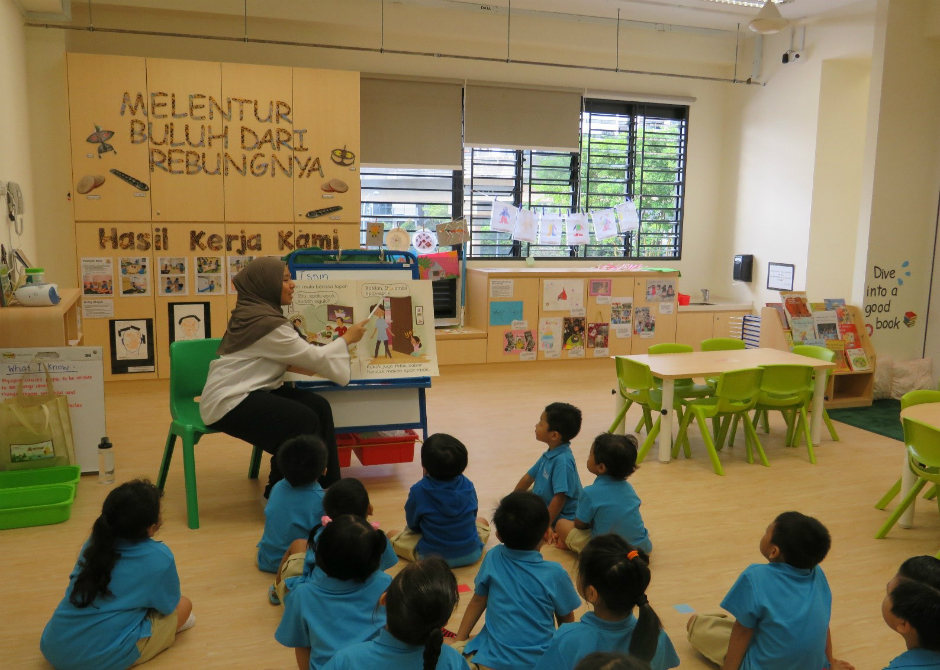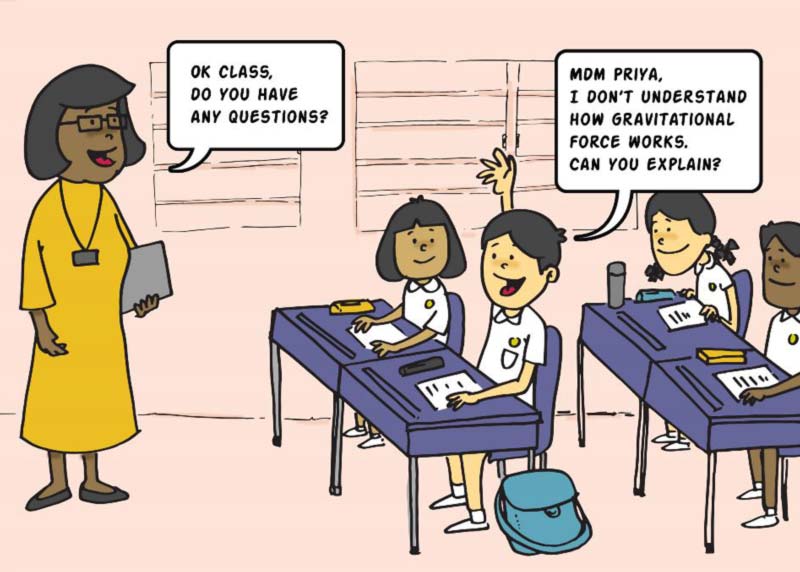Many families are now speaking more English than their Mother Tongue Language (MTL) at home. This has resulted in children lacking confidence in speaking their MTL. How can we help our children to be confident bilinguals? Miss Nursyafiqah Ramlee, Level Head for Malay Language at MOE Kindergarten@Waterway shares her views and tips.
The first step towards helping children achieve bilingual proficiency is to encourage the use of the MTL at home. For instance, when they see and hear their parents using the Malay Language at home, it would help them to understand and feel more comfortable in speaking the language. Communication in the MTL will develop your child’s listening and speaking skills better than just relying on learning activities in the pre-school. Whenever you can, use the language around your child to expand their vocabulary and enable them to learn through observing the context of various situations.
Some parents worry about using the MTL when they themselves do not have a strong command of it, but learning alongside children can motivate them to practise and improve. Show them that no one should be afraid of things they do not know. After all, learning is a lifelong habit!
Second, try engaging children in activities based on their interests and nurture their appreciation for the MTL. For instance, you can label things such as toys and food around the house in the targeted MTL or organise a treasure hunt game to search for household items called out in the MTL. Involve your child in simple tasks and incorporate vocabulary words based on the actions or objects used to help build stronger connections between abstract concepts and actual words. For instance, when folding laundry, you can have them name articles of clothing and their colours in the MTL, then introduce action words like “fold,” “stack,” “sort,” and so forth. This same approach can be applied to any other chores you engage in with your child.
You will help your child most by making learning fun. If they enjoy the learning process, they will hardly notice that they are being taught.
Even writing can be taught this way. When you are creating a shopping list, have your child help you name items and write them down. To develop even stronger associations, you can have them draw and label pictures of what you will be buying. At the supermarket, prompt them to recall the different items and name each one as they place them in the shopping cart.
Children’s expanding vocabulary will help them to read and write well, which can develop into the ability to read complex material and write meaningfully in their MTL. Even if your child dislikes reading, you do not have to worry. Teaching them to read can be challenging if they are not equipped with the foundational knowledge and skills of the language. So try to focus on the material they like or that interest them. Begin with picture books and use the illustrations to introduce written vocabulary, get them to try to predict or act out the story. This way, you can bring learning how to read and write in the MTL to life by making the process more fun and meaningful.
Last but not least, it is also important for you to do check-ins with teachers on how your child is doing in the languages. You will be better able to help them work on their weaknesses and further leverage their language skills. You can supplement their language learning experiences in the pre-school once you talk with their teachers and determine what they have already learnt in school.
Continuity between the home and the classroom enables your child to advance more rapidly in language classes, learn better in both environments, and achieve fluency much sooner.






